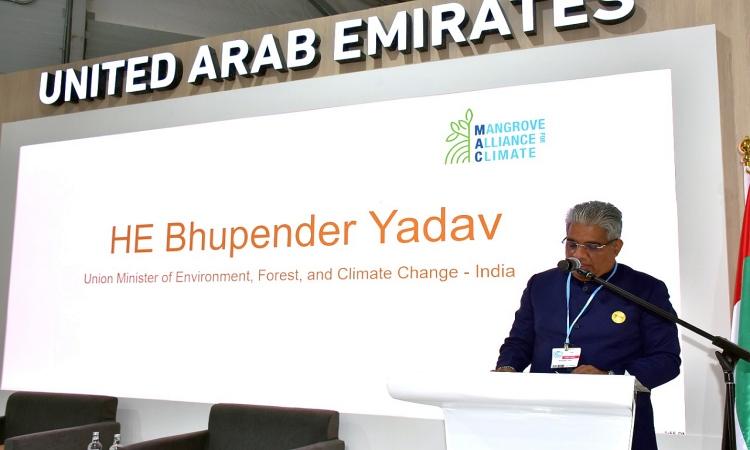
India joined the Mangrove Alliance for Climate, calling for the integration of REDD+ (Reducing Emissions from Deforestation and Forest Degradation) programmes with mangrove conservation (MAC).
takeaways
- India is one of the first five nations to join the MAC at the Conference of the Parties’ (COP27) 27th session in Sharm el-Sheikh, Egypt. Australia, Japan, Spain, and Sri Lanka round out the list.
- The move is in line with India’s Nationally Determined Contributions (NDCs) to create an additional carbon sink of 2.5- 3 billion tonnes of carbon dioxide (CO2) equivalent, through additional forest and tree cover, by 2030. The MAC initiative brings the world together to advance the global cause of mangroves.
Significance of Mangroves
- The most productive ecosystems on earth are mangrove forests.
- A variety of organisms use this tidal forest as a nursery.
- It guards against coastal erosion.
- It captures carbon.
- It gives millions of people a means of subsistence.
- Mangroves can operate as a buffer against ocean acidification and as a sink for microplastics. They can also absorb four to five times more carbon emissions than planted tropical forests.
Mangroves distribution according to the State of the World’s Mangroves Report 2022
- Mangroves are found in tropical and subtropical areas. The loss caused by humans accounts for 62% of the total losses of more than 600 square kilometres or 60,000 hectares between 2010 and 2020.
- 6.4% of the world’s mangroves are found in South Asia.
- Over 50% of South Asia’s total mangrove cover is found in India.
- Southeast Asia has the largest area of mangroves, with Indonesia accounting for a fifth of the total worldwide.
- Nearly half of the world’s mangroves are found in Indonesia, Brazil, Australia, Mexico, and Nigeria combined.
- 4,992 km2 of the nation’s total land area, or 0.15 percent, is covered with mangroves, according to the Forest Survey report 2021.
- Odisha (8 km2), Maharashtra (4 km2), and Karnataka are the top three states with an increase in mangrove cover (3 km2).
- The Sundarbans, one of the world’s largest remaining mangrove ecosystems, sustain a high level of biodiversity in both the terrestrial and marine settings.
- In India’s Andamans, Sundarbans, and Gujarat regions, there has been a noticeable rise in the mangrove cover.
Proactive measures taken by Maharashtra to preserve Mangroves
- Creating a Mangrove Cell.
- The Mangrove and Marine Biodiversity Conservation Foundation was established in order to foster research and livelihood initiatives while also increasing mangrove cover.
